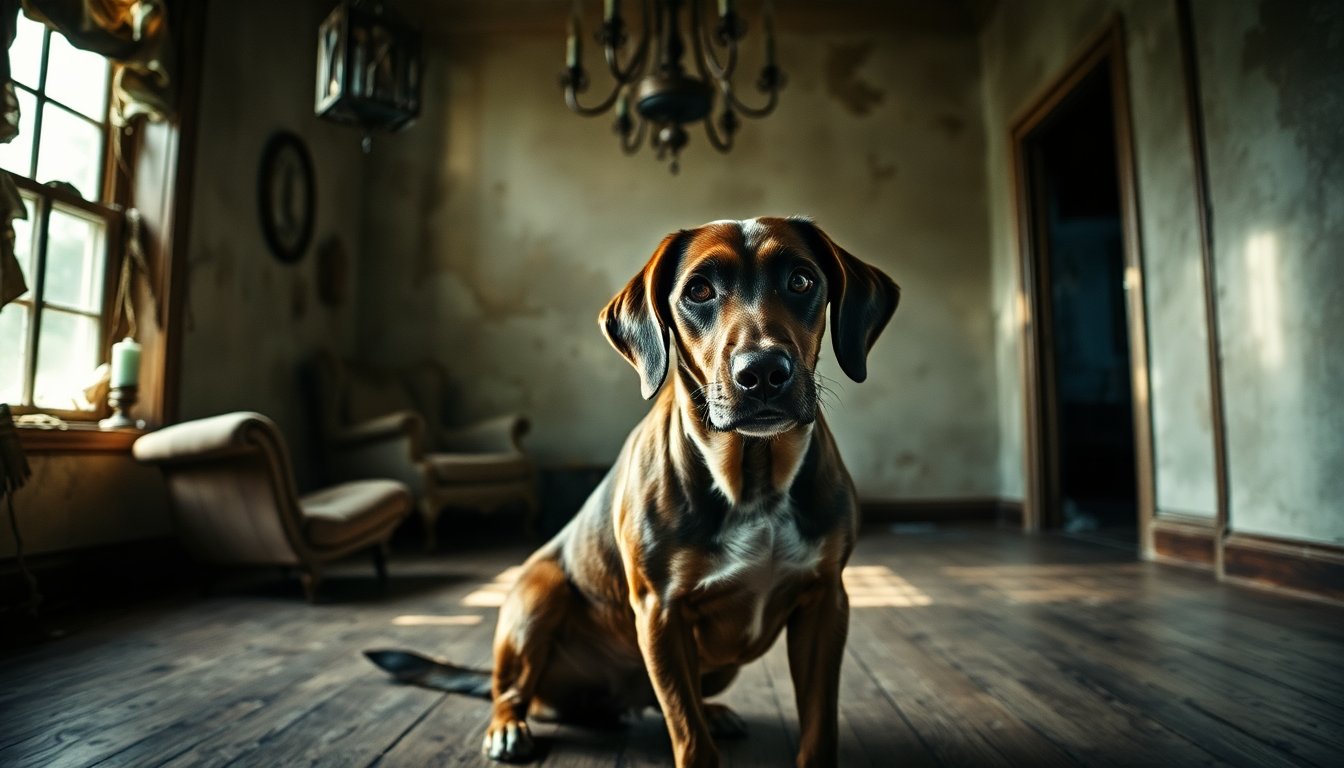Table of Contents
In a refreshing twist on the horror genre, the film Good Boy invites audiences to experience chilling events in a haunted house from the perspective of its canine protagonist, a charming retriever named Indy. This unique narrative approach fosters a connection with Indy as he senses a dark presence lurking around his owner, Todd, portrayed by Shane Jensen. Set against the eerie backdrop of an abandoned house, the film effectively utilizes the dog’s heightened awareness to build suspense and intrigue.
Premiering at SXSW, the film received a special honor for its four-legged star, Indy. This recognition, dubbed the Howl of Fame, parallels the Palme Dog awarded at the Cannes Film Festival, which celebrates outstanding canine performances. Indy’s expressive features and unwavering loyalty to Todd provide the film’s emotional core, distinguishing it in the crowded landscape of horror cinema.
The narrative unfolds through a dog’s eyes
The story begins with a montage showcasing the bond between Todd and Indy, highlighting the retriever’s evolution from a playful puppy to a vigilant companion. As Todd faces personal challenges, including a hereditary condition affecting his family, Indy remains by his side, embodying loyalty. Their journey takes a turn upon arriving at Todd’s inherited family home, setting the stage for the supernatural events to follow.
Indy’s perception of the supernatural
Upon their arrival, the atmosphere is charged with tension, particularly for Indy, who senses unsettling sounds and shadows that elude Todd. With keen awareness, Indy stands alert at the top of the basement stairs, sensing a presence that visibly distresses him. The film employs clever visual tricks and editing techniques to create suspense. Leonberg, the writer-director, uses lighting to cast eerie shapes, playing with the audience’s imagination and instilling a sense of dread.
As the narrative progresses, it becomes evident that Todd remains largely oblivious to the strange phenomena around him. Through Indy’s reactions, viewers experience palpable fear and confusion. The film capitalizes on the ambiguity of a dog’s thoughts—much like our own pets, Indy’s expressions become a canvas for viewers to project emotions and interpretations of the unfolding horror.
Craftsmanship and emotional depth
Over an astonishingly prolonged shoot lasting over 400 days, Leonberg focused on capturing Indy’s performance, often obscuring human actors to emphasize the dog’s perspective. The result is a film that not only tells a horror story but also explores the profound bond between humans and their pets. The emotional stakes heighten as Indy mirrors the protective instincts of his predecessor, who once cared for Todd’s grandfather, played by Larry Fessenden, a veteran of low-budget horror.
The haunting presence
As the film unfolds, the haunting presence in the house grows increasingly sinister. Indy is depicted as the intuitive guardian, sensing threats that Todd cannot perceive. This theme of loyalty resonates deeply as Indy encounters various spectral figures, including a muddy, ghostly man and a camouflage-clad hunter, both contributing to the film’s unsettling ambiance. The haunting visuals and eerie soundscape create an immersive experience for the audience, making them feel as if they are navigating the dark corridors of the house.
While some visuals may appear cryptic, they enhance the overall atmosphere of dread. The audience remains engaged, drawn in by Indy’s fierce loyalty and emotional depth. His journey to protect Todd amidst chaos serves as a poignant reminder of the bonds shared between humans and their pets—a theme that resonates universally, ultimately leaving viewers with a lingering sense of both fear and affection.


